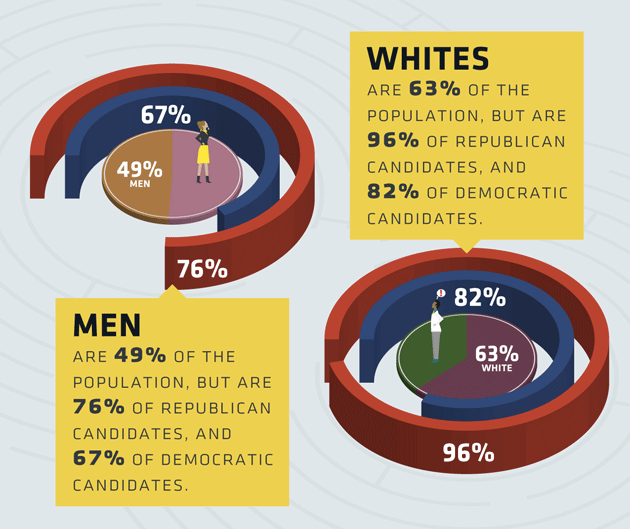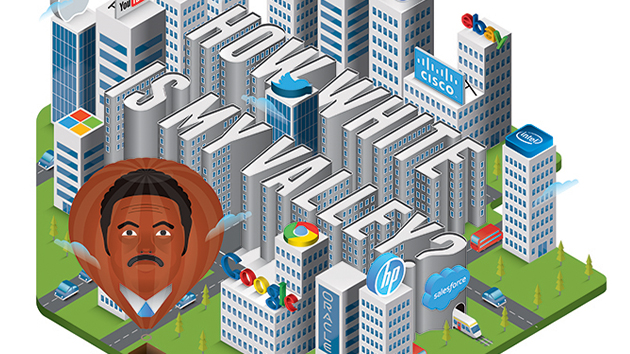
<a href="http://www.shutterstock.com/pic.mhtml?id=188426744&src=lb-39707240">Kakigori Studio</a>/ShutterStock and <a href="http://www.shutterstock.com/pic.mhtml?id=271445675&src=lb-39707240">Stoker-13</a>/Shutterstock
If you turned out to vote in today’s off-year general election, the chances are you voted for a bunch of white dudes. Not because you’re racist. (Although you probably are.) But because the ballots are overflowing with white dudes.
According to a study released last week by the Reflective Democracy Campaign, white guys make up 31 percent of the population, but they account for 65 percent of the people elected to county, state, or national office in America in 2012 and 2014. And that probably has a lot to do with the fact that 66 percent of the candidates are white guys. “The problem is not that women and people of color candidates aren’t winning,” said the campaign’s director, Brenda Choresi Carter. “The problem is that the demographics of our office holders are set when our ballots are printed.”
All told, the study found that 90 percent of candidates are white and 73 percent are men. Republican candidates, not surprisingly, are even more likely to be white and male. Check it out:

The racial disparities exposed in the study might have been less stark if it had included elections in large cities, which tend to be more racially diverse than rural areas. But that still doesn’t explain the wide gender gap.
Carter blames the imbalances on a political system that favors the social and economic elite. Typically, candidates for elected office can afford not to hold full-time jobs, belong to existing political networks, and are not perceived as “risky” by donors, political parties, and other gatekeepers. And they’re typically in office already: 53 percent of all elections are uncontested, and 90 percent of those unopposed candidates are white.













